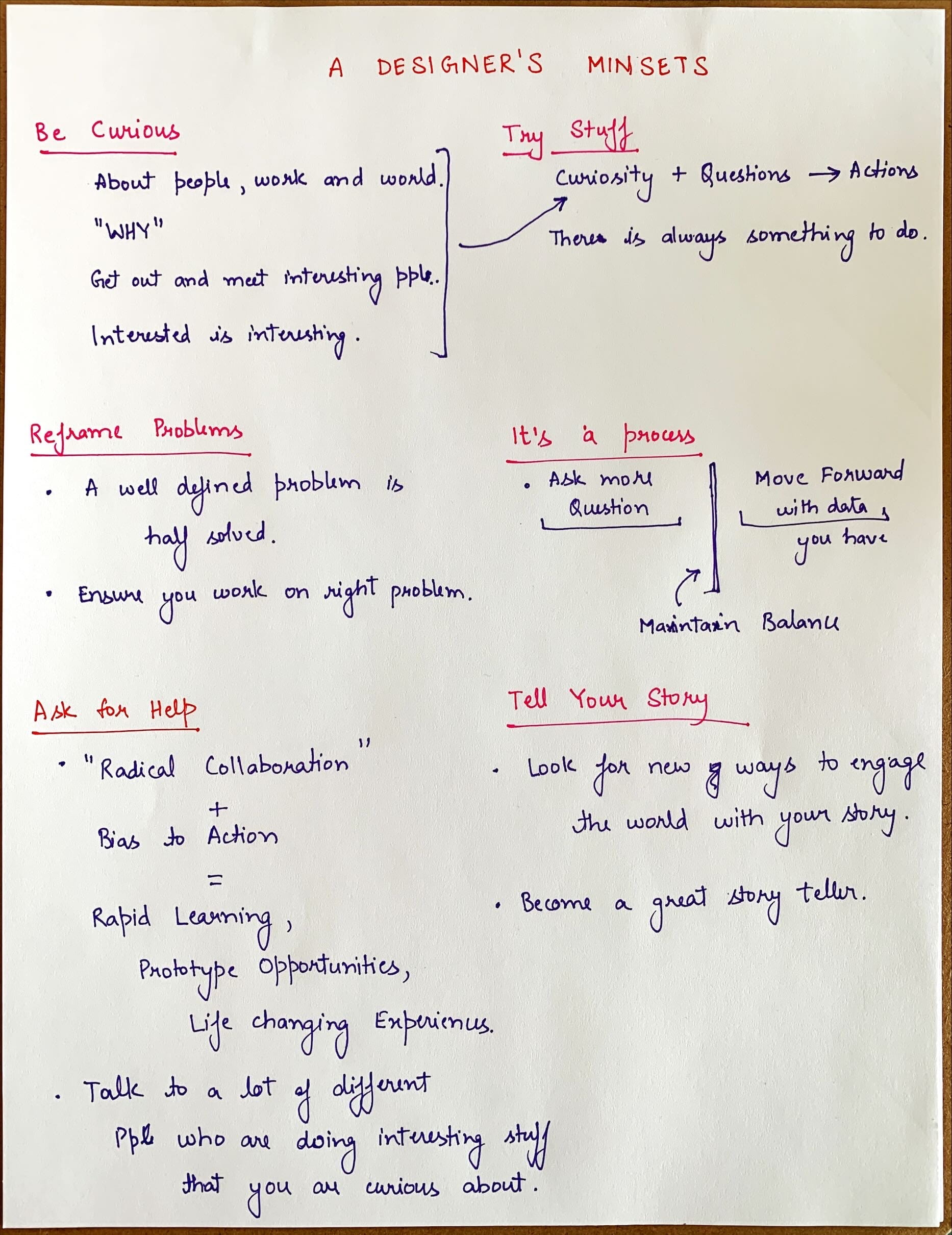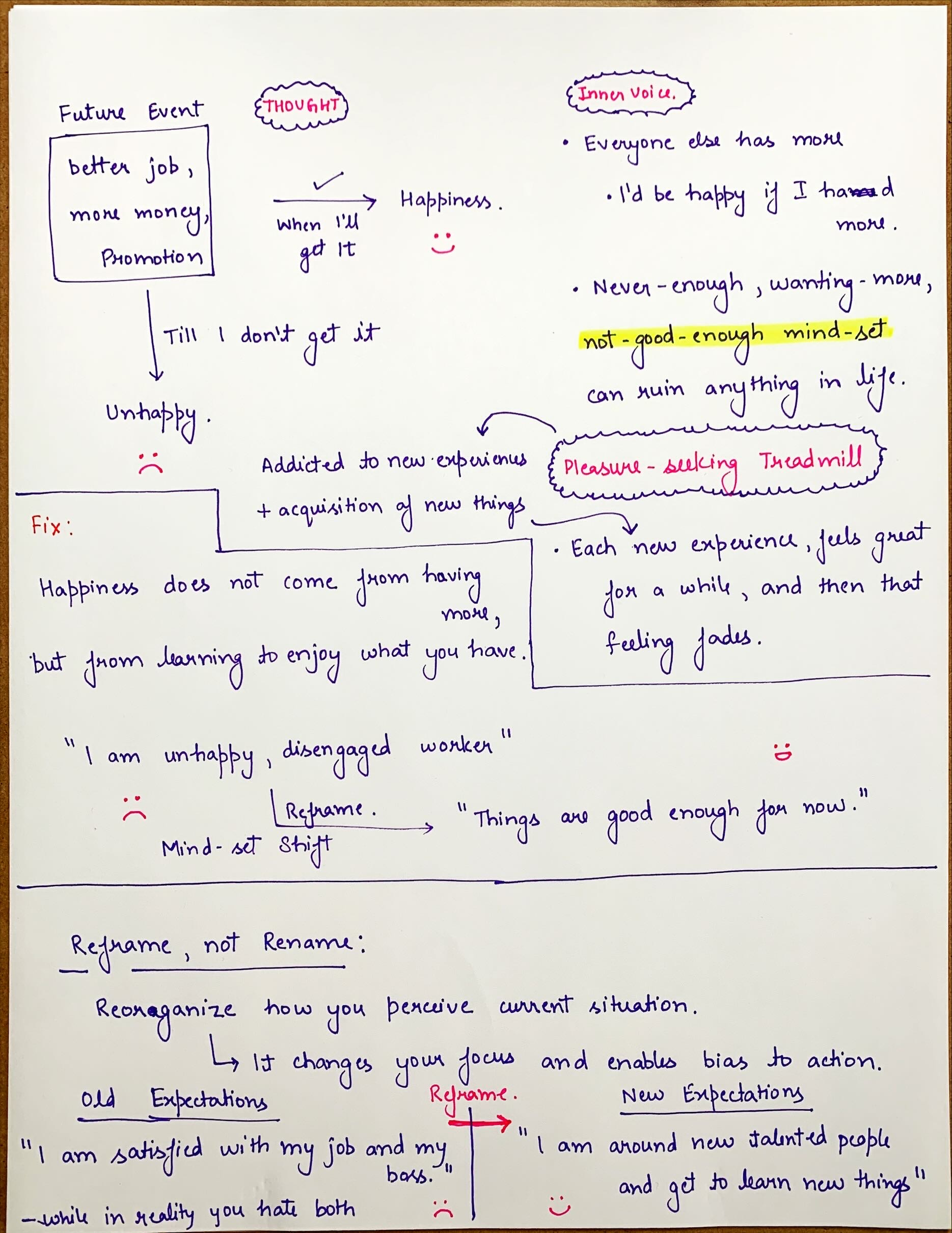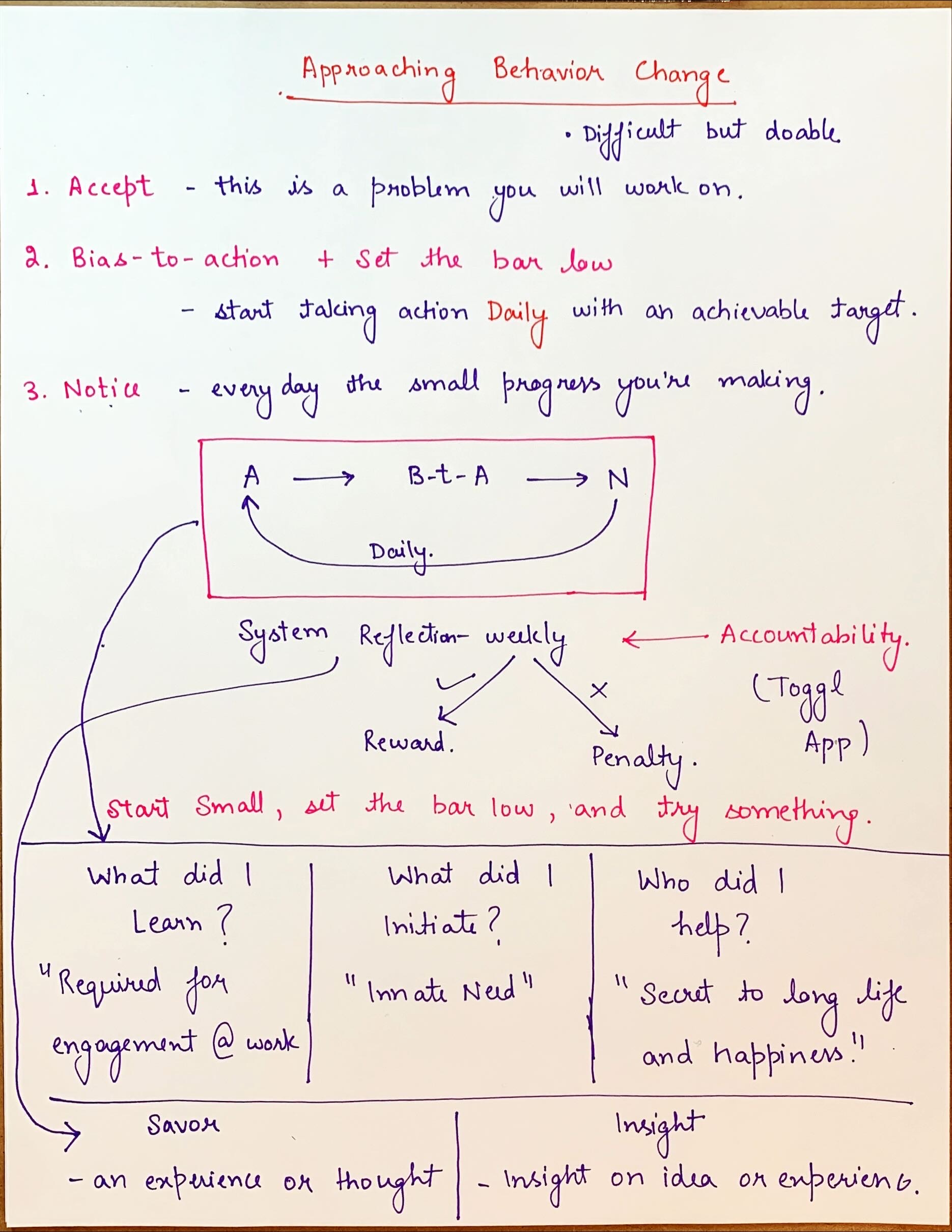DRAFT
A Startup is an organization designed to create new products or services under conditions of extreme uncertainties. Its primary goal is to systematically figure out right thing to build as quickly as possible. The thing that people want and will be willing to pay for.
1. Validated Learning: Think Big, Start Small
While building startup, it is easy to kid yourself about what you think customers want or learn things that are completely irrelevant. Thus, you want validated learning - learning backed by empirical data from real customers.
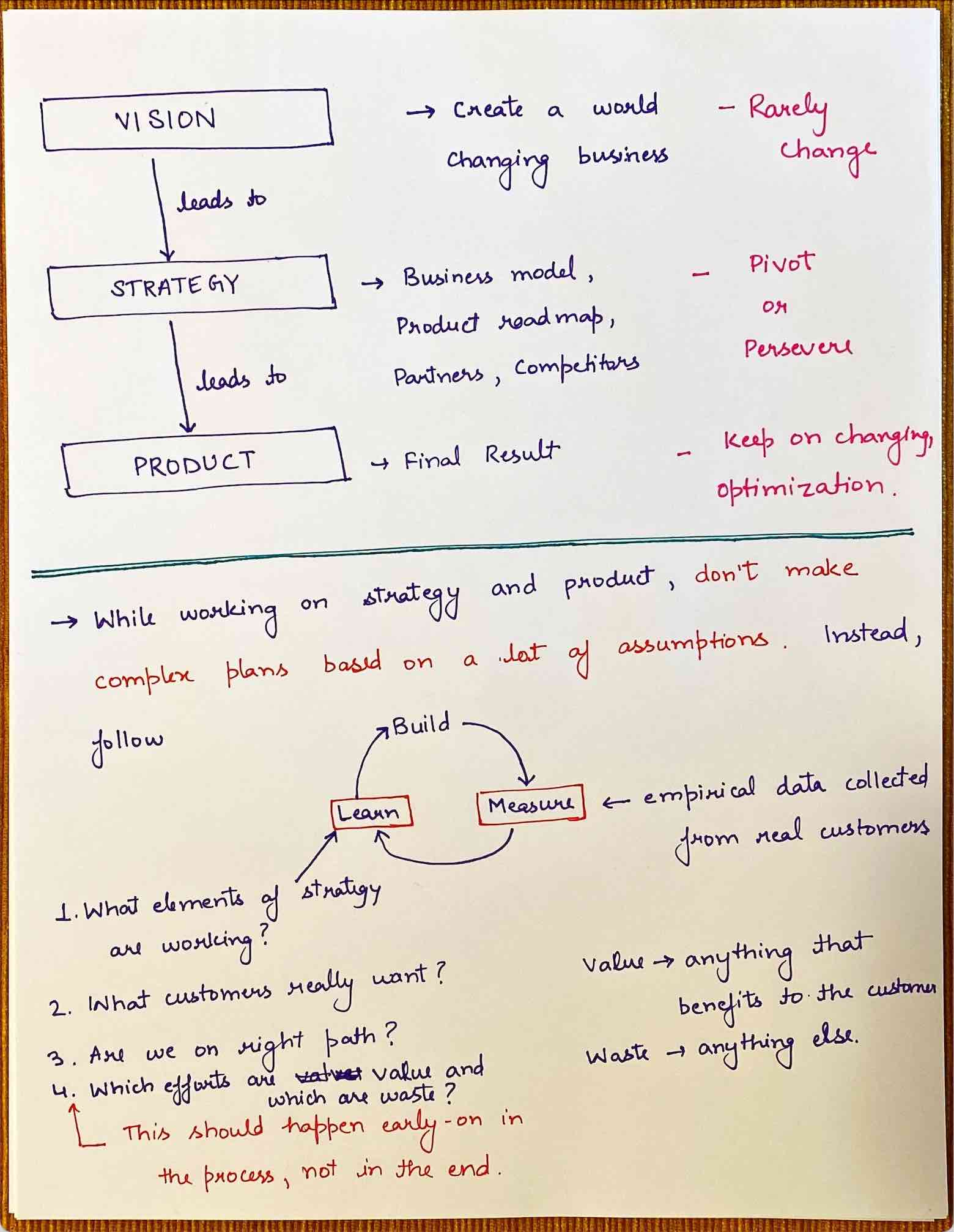
⏱ Are we productive?
The productivity in a startup is not how much stuff is being built but how much validated learning we are getting for our efforts. This requires a lot of experimentation.
⚠️ Warnings
- Learn what customers really want, not what they say they want or what we think they should want.
- There are many successful leaders and middle managers who think they are analysts and their job is to do great planning, analyzing and have a plan. This hinders the chance to have the customer voice.
2. Minimize Time Through Feedback Loop ♻️
:runner: Are we making progress?
To figure out if we are making progress, we need to minimize the total time through the feedback loop - Build, Measure, Learn. A Minimum Viable Product (MVP) helps us test fundamental business hypothesis.
How to figure out MVP?
- Step 1: Figure out what we need to learn. (Learn)
- Step 2: Figure out what we need to measure to know if we are learning. (Measure)
- Step 3: Figure out what product we need to build to provide that measurement. (Build)
2.a Learn - Get out and see for yourself
You cannot be sure you really understand any part of any business problem unless you go and see for yourself firsthand. It is unacceptable to take anything for granted or to rely on the reports of others. Potential customers, markets, and suppliers exist outside your building and you need to go out to learn them.
Identify the target customer and use it to guide daily prioritization decisions.
2.b Measure
- Are you building the right thing? What if you are optimizing or marketing the wrong product?
- How do you know you are making product better?
- How do you know if the changes team made actually mattered to customers?
You need metrics that help you show progress and establish clear cause-and-effect inferences.
Imagine optimizing only one machine in a factory. It is efficient from machine's perspective, but inefficient from factory's perspective.
A perfect metric should be
- actionable - demonstrate clear cause and effect
- accessible - understood by everyone
- auditable - is data reliable? does report contain true facts?
Most teams believe that they are constantly making things better, their work is sabotaged by other teams that just don't get it. When the numbers go up, people think the improvement was caused by their actions. When the numbers go down, it's somebody else's fault. Finding out what is actually going on is extremely costly. Thus most managers simply move on. With actionable metrics, people are better able to learn from their actions.
Any data driven company would have teams where there are dashboards that satisfy the needs of that team. However, these dashboards are often not understood by most of the people not directly related to teams. People who can use them to guide their decision making.
Often the dashboards lack the ability to test if the data is consisten with reality. Everytime a dashboard shows wrong reality, team looses its confidence in reporting. Thus, a metric should be credible and auditable. We should be able to test the data by talking to customers.
2.c Build - Minimum Viable Product (MVP)
An MVP is the smallest product to get through feedback loop with the minimum amount of effort. Most product development people dramatically overestimate the number of features needed in an MVP.
An MVP should:
- Be able to validate assumptions: Value hypothesis and Growth hypothesis.
- Be targeted towards early adopters (who accept 80% solution), instead of average customer (who need a perfect solution). EA take risk with unpolished product to gain competitive advantage.
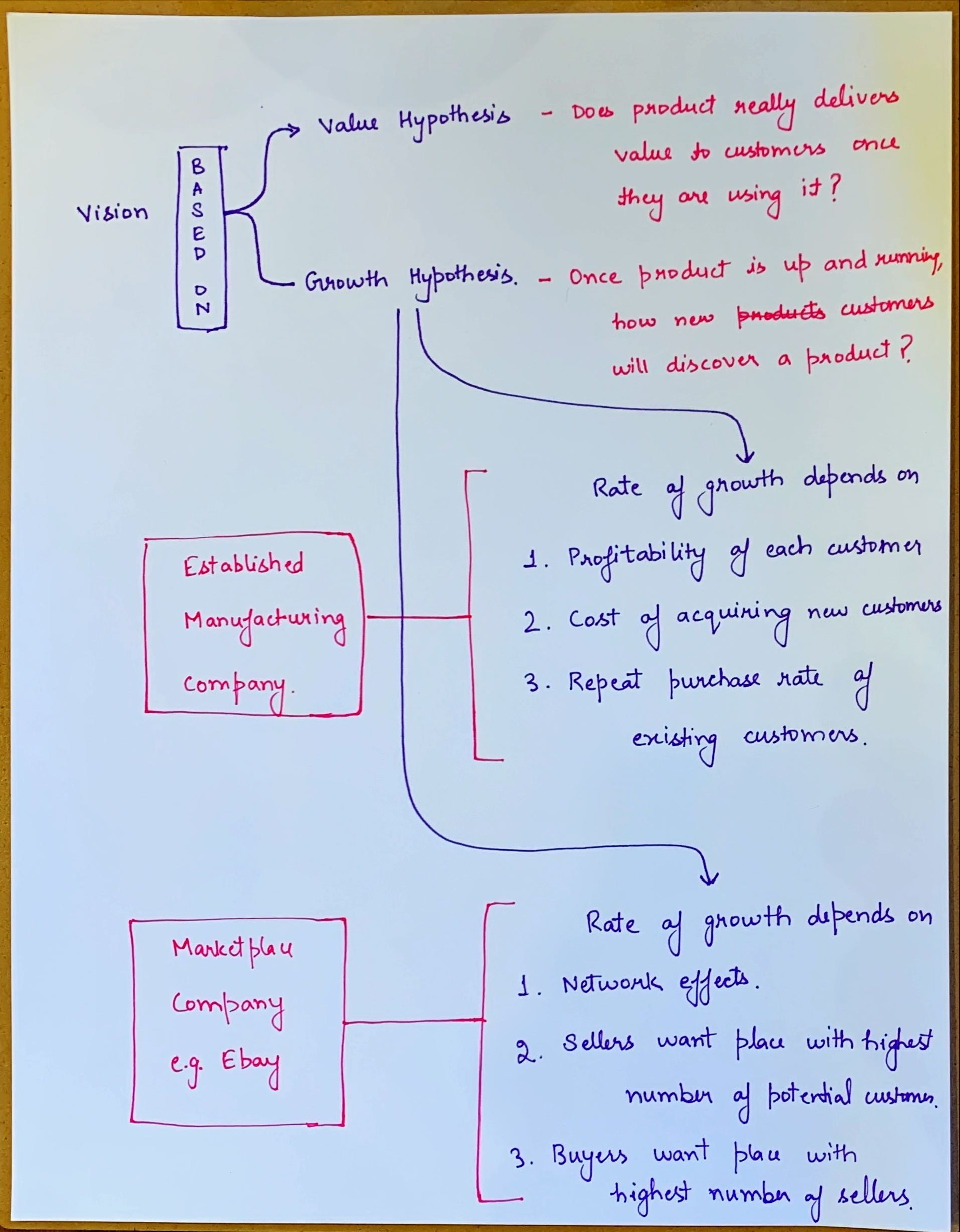
Note: Quality of MVP
Modern engineering philosophies focus on producing high-quality products. However, that philosophy assumes that the company knows which features customer perceive as worthwhile. In a startup, you don't even know who the real customer is. Thus, you shouldn't strive to deliver a high-quality product from the beginning, instead ship a half-baked product that can provide insights about what attributes customers care about. Use these learnings to build a great high-quality product.
In reality, this is hard to practice for perfectionists but this should be the goal. What if the customers don't care about design in the same way we do?
MVPs allow us to test our assumptions. If the customers react the way we expect, that means our assumptions are correct. If we release a poorly designed product and customers cannot figure out how to use it, that means we need to invest in superior design.
3. Accounting
It is a three step process
- Baseline - Use an MVP to establish real data about where you are right now. Without a clear-eyed picture of your current status, you can not begin to track your progress.
- Tune - Optimize product to move baseline toward the ideal. After some time, you will reach a decision point - pivot or persevere.
- Decision - If you are making good progress towards the ideal, then continue - persevere. Otherwise, the current strategy is flawed and needs a serious change - pivot.
Don't get happy with total revenue or total customers
Cohort analysis Analyze customer behavior independently by using cohort analysis, instead of focusing on cumulative totals like revenue or customer count. For instance, evaluate the percentage of January sign-ups who used three or more product features and determine how many of them paid. Cohort analysis provides insights into areas to prioritize efforts.
Dig deeper -
- why customers are not converting?
- what are their bottleneck?
- Is the product not providing enough value?
Based on these insights, improve the product and then run experiment again. If your improvement efforts do not improve metrics, it means you are building an unsustainable business.
Assorted Learnings
- Customers don't care how much time something takes to build. They care only if it serves their needs.
- Don't believe keeping secret would take you farther instead learning faster than anyone else will.
- In big companies, a manager who promises to deliver something and fails to do so gets in trouble. Usually the failure is because of inappropriate planning or execution. In startup, both plans and projections are full of uncertainty.
- The myth of perseverance is dangerous. We all know stories of people who managed to pull out a victory when things seemed incredibly bleak. Unfortunately, we don't hear stories about the countless nameless others who persevered too long, leading their companies to failure.
- A good design is one that changes customer behaviour for the better.
- Just Do It vs Analysis Paralysis: Some leaders talk to few customers and rush to build, while others endlessly refine plans. However, the effectiveness of strategy depends on accurate facts about customer interactions, which cannot always be detected on a whiteboard.
- 🚀 Success vs Failure ⚰
Successful individuals possess both foresight and the ability to adapt their plans based on what is working well and what needs to change. They do not give up easily, nor do they persist blindly. Their unique combination of perseverance and flexibility leads to success.
